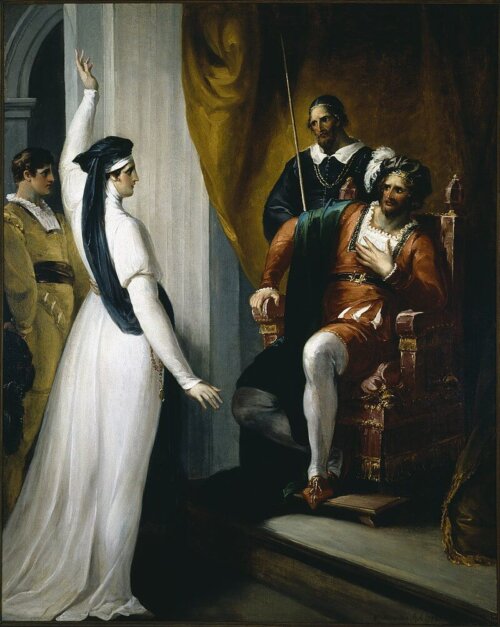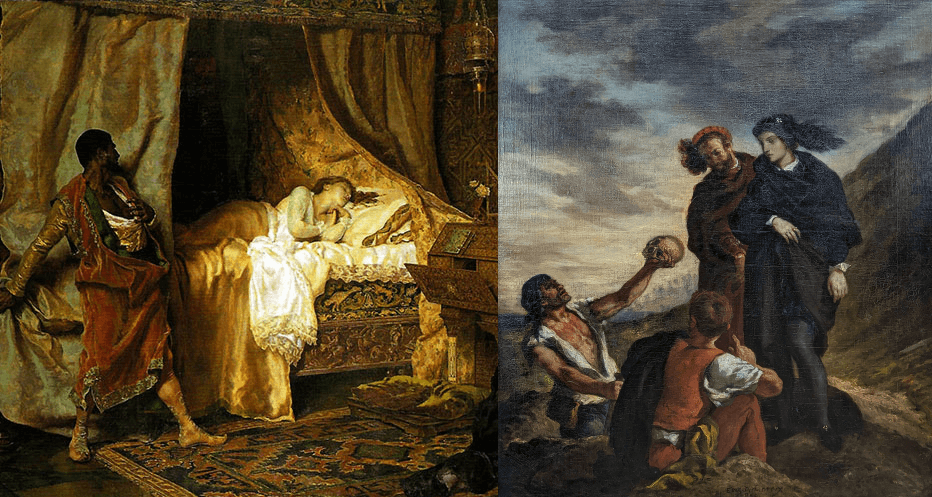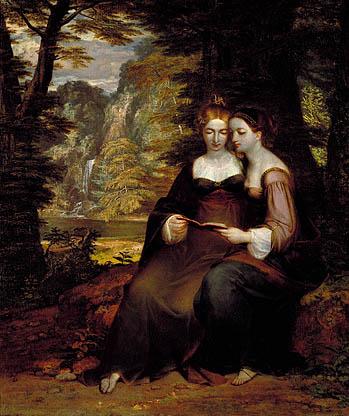The Music of American Composer Charles Martin Loeffler

There will not be another like him; no one in America has approached him for individuality of style, perfection of craftsmanship, beauty of utterance, loftiness and subtlety of thought.
—Lawrence Gilman
It was in the mid-to-late 19th century that America first achieved lasting distinction in classical music. Lacking a deeply rooted tradition, she naturally drew both influence and manpower from Europe, including performers, teachers, conductors (many of whom were German emigres), and composers. A good example is the fascinating though largely forgotten figure of Charles Martin Loeffler (1861-1935), composer, violinist, and aesthete who adorned the cultural life of Boston for half a century. Incredible as it may seem today, Loeffler was once considered the foremost composer in America and one of the leading composers in the Western world. Yet he never consciously strove to be an “American” composer and indeed was not born here.
A cloud of mystery surrounded many aspects of Loeffler’s life including his origins. He consistently claimed to be from the Alsace, and critics were fond of noting the “Alsatian temperament” of his music. However, research has revealed that he was German, born near Berlin as Martin Karl Löffler. Loeffler’s father had become the victim of a political conspiracy charge in the Franco-Prussian War and was thrown in prison, where he died of a stroke. Angered and traumatized by the experience, the son repudiated his German identity and embraced French culture instead.
In a sense Loeffler was a super-immigrant, bringing a myriad of influences to the American melting pot. His cosmopolitan upbringing included stints in Russia and Switzerland, then music study in Paris. Arriving in New York at age 20, he was soon recruited by the fledgling Boston Symphony Orchestra as assistant concertmaster. Loeffler served the orchestra for thirty years, frequently soloing in his own compositions and developing an international fame as a composer. He became a United States citizen in 1887, and then, in 1909, retired from the orchestra and settled on a farm in Medfield, Massachusetts to compose and teach.
In a farm house tended to lovingly by himself and his wife, Elise, Loeffler lived a life of seclusion, cultivating a love of beauty, nature, and wildlife. Loeffler typified a life of culture that now seems obsolete—aristocratic in his tastes and manners, friendly and gracious to the friends and students who called on him. The kind of music he wrote matches the tall, slender figure with neatly trimmed beard we see in paintings by his friend John Singer Sargent. A critic described him as “a singular apparition in music,” and both in appearance and in music he was a novelty on the American scene.
Late in his life he was seen as an old-fashioned, conservative composer. Yet in his turn-of-the-century prime Loeffler appeared an ultra-modernist and even a “decadent,” alluding to the Symbolist and Pre-Raphaelite movements in painting and literature. One critic said that his music was more concerned with evoking mood (à la Debussy’s Impressionism) than with thematic development. True, Loeffler eschewed the abstract classical forms, like symphony or string quartet, in favor of descriptive genres, like the tone poem. He was devoted to program music, where the storyline supplied the musical form, and to music that suggested colors and images. To Boston’s musical elite Loeffler’s work seemed dangerously avant-garde, and it continued to be controversial later when, becoming good friends with George Gershwin, Loeffler began to incorporate jazz motifs into his compositions.
Yet the luscious, “decadent” surface of Loeffler’s music is ultimately less important than its strong spiritual core. This is certainly true of his masterpiece, Music for Four Stringed Instruments, which he wrote in 1917 as a memorial to Victor Chapman, the first aviator killed in World War I. It is a piece as deeply felt as it is finely crafted, weaving Gregorian chant melodies for Easter into a moving elegy for the fallen hero. There are three chant melodies used: Resurrexi, Victimae Paschali laudes, and the In Paradisum from the Requiem Mass. Resurrection is the keynote the work, which depicts transcendence over sorrow and suffering.
Loeffler shared the Aestheticists’ interest in Catholicism, and he once found peace and consolation visiting a Benedictine abbey in Germany during a trying time in his life shortly before World War I. Back home in Medfield, he instituted a children’s Gregorian chant choir in the town’s Catholic church. His orchestral tone poem Hora Mystica, written in 1916 and premiered in rural Connecticut, was a musical impression of his visit to the abbey. The review of the original performance is worth quoting, as it evokes the rarefied aestheticism which Loeffler embodied:
“The music was evocative, transforming. As we listened, the long June twilight failing slowly through the lilac-scented stillness outside became, for us, one with the enchantment that entered the soul of the pilgrim who spoke to us from the music. Through the open doors and windows of the encircling hills, a deepening purple against the luminous amber of the sunset sky; the hushed valley with its distant shining stream; the tremulous stillness of the fields: these things were touched with magic, caught up and merged, by the witchery of the tone-poet, into the pictures unfolded in his music—became one with the communicated vision of the rhapsodist.”
Loeffler’s other tone poems include Memories from My Childhood, which Toscanini and Stokowski both championed, and A Pagan Poem, inspired by Virgil, which became his most successful piece. But the one work of his to become a fixture in the repertoire is Two Rhapsodies for viola, oboe and piano, a dreamlike pair of pieces inspired by Symbolist poems. They have been copiously recorded and remain popular in chamber recitals; one critic has rated them among the finest piano trios of all time.
In wrestling with his national identity, Loeffler became caught up in the contemporary debate between French and German aesthetic ideals. America’s musical establishment in the 19th century was heavily German in personnel and outlook, but this changed around World War I when all things German suddenly became suspect. A veritable regime change forced many of America’s German-born musicians and conductors from their jobs in favor of French candidates, and a few were even placed in internment camps as enemy aliens.[1] France became the new artistic model for America, and many young composers (Aaron Copland among them) flocked to Paris instead of Berlin for their studies.
On this side of the Atlantic, Boston became known as the “musical Athens of America” thanks in no small part to the work of Loeffler. Yet despite the esteem in which he was held, changing musical fashion soon thrust him to the sidelines.
By the 1920s, American concert music was moving away from Loeffler’s post-Romanticism toward a style more in tune with the times and imbued with an “American sound.” To newcomers like Copland and Charles Ives, music of Loeffler’s generation seemed a quaint relic, too conservative and too European. A particular criticism was that Loeffler seemed detached from the “real world.” He was “not of his time,” as his obituary noted, as he chose not to evoke the world of skyscrapers and factories in his music. Loeffler the American Impressionist was found guilty of being an escapist, an ivory tower aesthete. New theories valued social realism over ideal beauty—reflecting the zeitgeist rather than elevating the spirit—with the hint of Marxian dialectic that entailed.
More perceptive critics recognized that Loeffler’s music brought us into contact with “things immemorial” through its poetic evocation and keenly chosen sonorities. Although the musical establishment has preferred Ives’ erratic eccentricity over Loeffler’s refinement, grace, and craft, his works still stand as eloquent expressions of their time and place, of a bygone America with strong links to a still culturally vibrant Europe. And while it doesn’t quote American folk tunes or wave a nationalist flag, his music remains a distinctly American accomplishment.
“Like America, Loeffler was a great assimilator,” writes his biographer Ellen Knight. The United States gave Loeffler a focus for his interests and talents and a resolution to his crisis of nationality. It provided a chance to discard a painful past and create a fresh identity. Embracing his new homeland, Loeffler once declared that America “has opened my eyes about all countries” and had a wisdom that contrasted with the prejudice found elsewhere in the world.[2]
Loeffler’s rise to eminence among composers worldwide signals an American cultural arrival at the turn of the 20th century. Just as well, his story illustrates the strength our nation has drawn from her immigrants. In a sense he was a bridge from the Old World to the New; but more to the point, he wrote a number of fine, exquisite pieces of music which deserve to be heard. Loeffler brought something unique to our culture, and his colorful and intimate music should not to be forgotten.
Notes
[1] Ellen Knight, Charles Martin Loeffler: A Life Apart in American Music (Urbana: University of Illinois Press, 1993), 199. [2] Ibid., 99.
This was originally published with the same title in The Imaginative Conservative on July 11, 2020.




